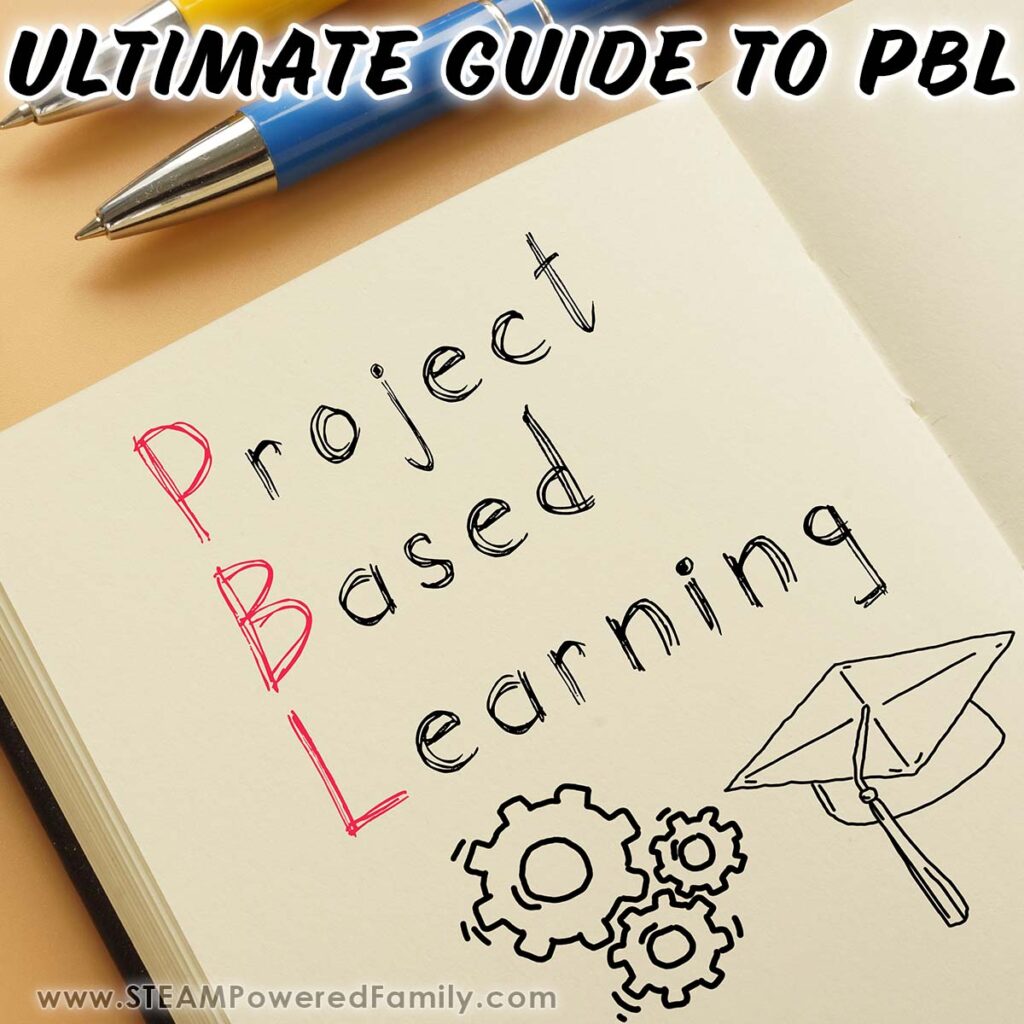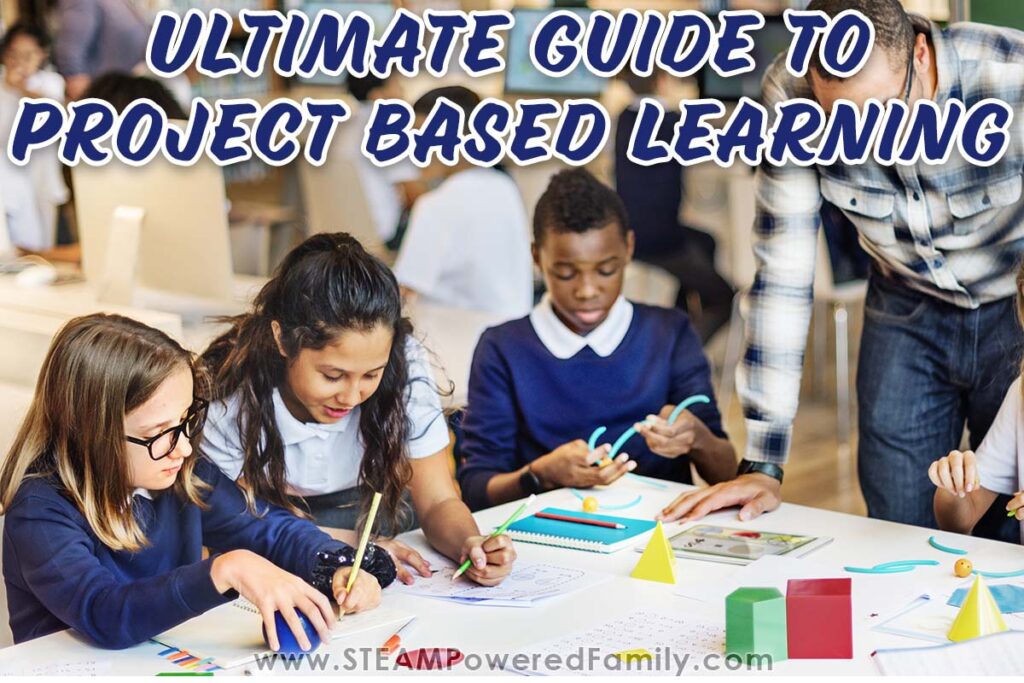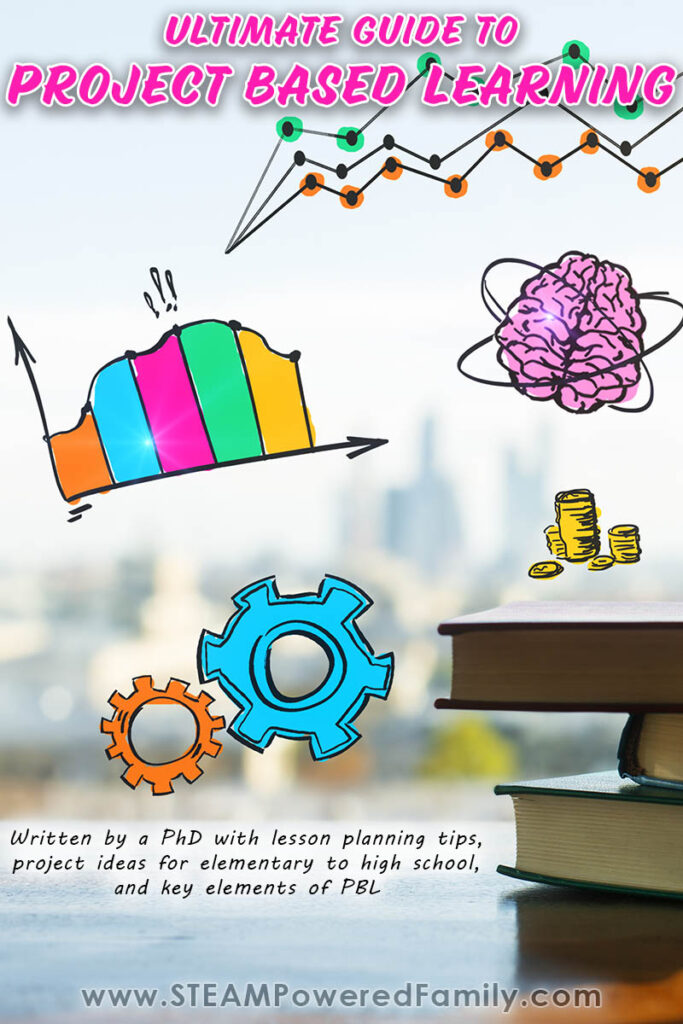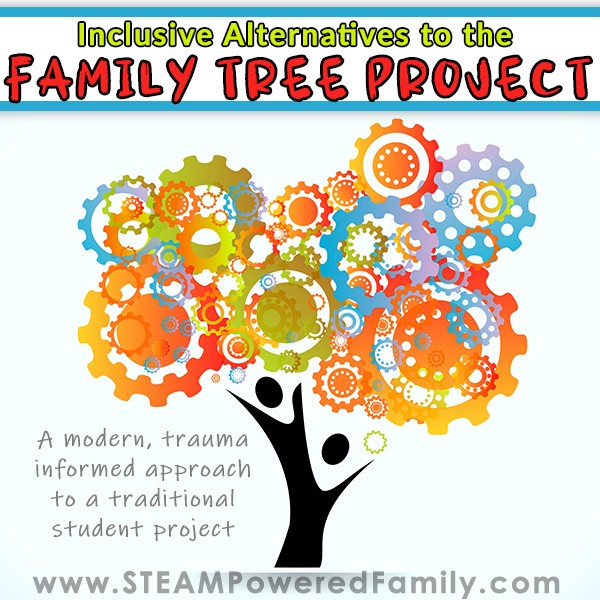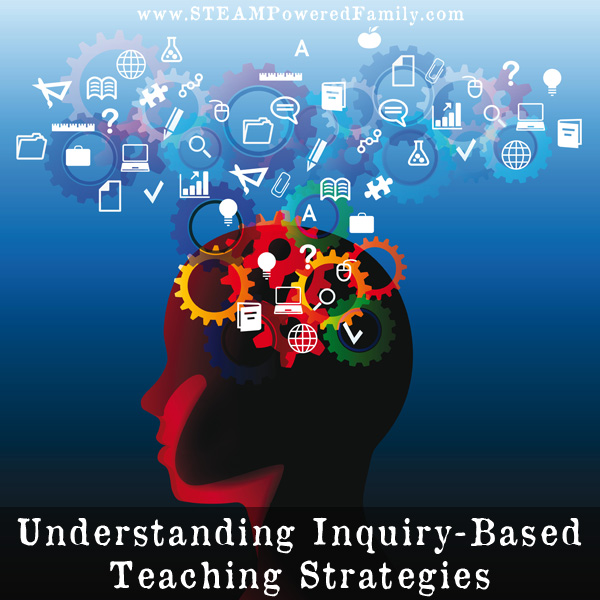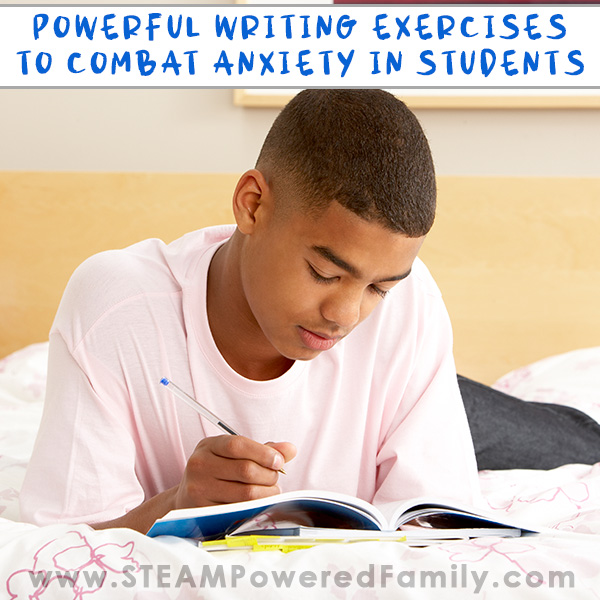Project Based Learning – PBL for the Classroom
Project Based Learning is something that I am so passionate about! Using inquiry-based teaching strategies changed my mindset when it came to teaching and learning. Project Based Learning in the classroom has transformed the way my students learn with real-world, authentic projects. Learn how to get started!
Project-Based Learning in the Classroom
Disclaimer: This article may contain commission or affiliate links. As an Amazon Influencer I earn from qualifying purchases.
Not seeing our videos? Turn off any adblockers to ensure our video feed can be seen. Or visit our YouTube channel to see if the video has been uploaded there. We are slowly uploading our archives. Thanks!
What is Project Based Learning?
Project Based Learning (PBL) is a type of teaching method and instruction where students work on a complex problem or real-world projects in a variety of subject content areas. First, PBL has many characteristics and is not just a “one-off” quick project. My research area for my dissertation was all about Project Based Learning and student motivation and engagement. Finally, in my research, I found the seven essential elements for Project Based Learning to drive not only curriculum design but also instruction in the classroom.
What are some benefits of Project Based Learning in the classroom?
The benefits of PBL are widespread in the classroom. Here are some benefits of high quality Project Based Learning that I constantly see with my students!
Deep Learning
First, high-quality PBL encourages students to engage with content in a deep and meaningful way. By working on real-world problems or challenges, students also develop a deep understanding of concepts and skills students can apply to new situations.
Critical Thinking
Of course, we’re always talking about how we want our students to think more critically! Project Based Learning also requires students to use critical thinking skills to analyze information, solve problems, and make decisions. This leads to greater content knowledge and the ability to use the application of knowledge in other subject areas. Overall, this helps students develop important 21st-century skills that they can use in other areas of their lives.
Collaboration
In addition, PBL provides opportunities for students to work collaboratively with their peers. This helps them develop teamwork and communication skills that are essential in today’s workplace. Even if they are working on an independent project, giving each other feedback is a PBL-centered means of collaboration.
Student Engagement
Of course, Project Based Learning encourages student engagement and motivation by allowing them to take ownership of the learning process. I found students are more likely to be invested in their work when they have a sense of ownership and control over their learning experience.
Authentic Assessment
I’m not a big fan of grades or standardized testing. PBL also provides opportunities for authentic assessment of student learning. By working on real-world problems or challenges, students can demonstrate their learning in ways that are meaningful and relevant.
Increased Creativity
Finally, Project Based Learning encourages students to be creative in their thinking and problem-solving. By working on open-ended projects, students have the freedom to explore and generate new ideas. This can lead to greater student achievement.
What are the essential elements of Project Based Learning curriculum design?
What does a Project Based Learning curriculum look like? According to John Larmer (2020), there are seven essential elements for Gold Standard PBL:
Challenging Problem or Question
Starting each Project Based Learning design with a driving question guides student inquiry from start to finish. My students always come back to that question, but there is always room for revision! Sometimes, I revise my original questions for classroom projects if my students discover deeper insights as we explore the question. Of course, if my students are completing individual projects, such as Genius Hour or Passion Projects, their questions can change. In my research, I found the fluidity of the projects motivated my students.
Sustained Inquiry
Sustained inquiry is also an important aspect of Project Based Learning that involves an extended period of time, investigation and exploration of a complex question, challenge, or problem. It’s important to remember that true Project Based Learning isn’t an isolated, 45 minute project. It involves deeper thinking, revision, and questioning.
Authenticity
Next, Project Based Learning designs are authentic and based on a real-world problem, issue, or context that is meaningful to students. Some authentic problems my students and I have explored in the classroom are sustainability in water resources, designing a new sports complex for the school, and implementing a school drama club.
Student Voice & Choice
In my study of 150 high-ability learner students participating in career-based interest Project Based Learning projects, students expressed ownership of learning when they had choices in the content, process, and product (Schneider, 2022). Even in whole class instruction, giving students choices increases motivation and engagement. For example, if you implement a tiny house building project, let students have choices in the design, materials for their project, and even whom they work with.
Reflection
Of course, reflection is an essential component of Project Based Learning because it enables students to think critically about their learning, identify what they have learned, and consider how they can apply that learning in future situations. It also gives students ownership of their learning. Try implementing checkpoints throughout the project where students reflect on their learning.
Critique & Revision
Students seem to know how to give positive comments to one another (“Great job!”), but giving helpful feedback can be a struggle. Critique and revision is not only about personal evaluation but also teaching students to make relevant comments and ask questions. Also, engaging experts in fields to give student feedback makes projects even more “real-world” ready! My students have engineering mentors to help with projects design in an engineering competition that is student-driven. Overall, everything from the driving question to the design and public product is decided by the kids!
Public Product
Finally, true Project Based Learning is meant to be shared. Whether this is with an entire classroom, school, stakeholders in the community, or online, making the final product public increases real-world authenticity and student ownership.
How do you write a Project Based Learning lesson plan?
Project Based Learning lesson plans aren’t your typical lessons. They take time and effort to put together, but they are more open-ended because they allow for student autonomy and flexibility. Here are the general steps to write a PBL lesson plan.
Identify Learning Goals
Determine the learning goals for your Project Based Learning lesson. What skills, knowledge, and understanding do you want your students to develop?
Choose a Driving Question
The driving question should be open-ended and authentic, and it should relate to the learning goals.
Plan the Project
Develop a plan for the project that includes the scope of the project, the timeline, and the resources needed. Consider how you will assess student learning and how you will coach and support student progress throughout the project. If you are choosing to take grades for the project, consider a rubric to assess. Share the rubric early. You can even let students help develop!
Create Teams
Divide the students into teams to work on the project. Consider the size of the teams, the roles and responsibilities of team members, and how you will support teamwork. I often let students choose teams to give students more voice and choice.
Conduct Research
Provide students with resources and guidance to conduct research related to the driving question. Encourage students to explore multiple perspectives and to ask questions.
Design and Create
Encourage students to design and create a product or solution that addresses the driving question. Provide guidance and support to help students develop their ideas and project design.
Receive Feedback
Provide opportunities for students to receive feedback from peers, teachers, and experts to improve their project.
Present the Project
Provide opportunities for students to present their final product or solution to an audience. Encourage students to reflect on their learning and to share their experiences with others.
Evaluate the Project
Evaluate the project based on the learning goals and assess how well students achieved the learning goals. Use the evaluation to inform future Project Based Learning lessons.
What are some struggles and objections to Project Based Learning in the classroom?
Although Project Based Learning yields results and benefits for students, there are some objections that arise. The time to plan and implement, student management, and available resources are often reasons teachers or administrators give for not implementing PBL. However, there are so many resources available to use to save time and allow your students to have authentic-learning experiences. These experiences may also be scaffolded to help with student management as well! Read on to learn more about how PBL works in the classroom with free resources from STEAM Powered Family!
How does Project Based Learning work in the classroom?
In a Project Based Learning approach, students work in teams to investigate, design, create, and present solutions to real life problems or questions. Here are some Project Based Learning examples and STEM PBL ideas to use in the classroom.
Project Based Learning ideas for 1-3 grades
One of my favorite PBL ideas that incorporates science, math, engineering, and even artistic design is building catapults! With simple supplies (popsicle sticks, bottle caps, glue, cotton balls, and rubber bands), students can plan and design catapults to launch materials. There is so much versatility in creating different designs to see how far the materials launch. Plus, students also like the idea of having permission to launch things across the classroom. Finally, incorporate all elements of PBL by including this in a unit with driving questions related to very early physics concepts.
Project Based Learning ideas for 4-6 grades
Your students are inspired, creative scientists! Have your learners explore past scientists and related experiments and then also develop their own inquiry projects into STEAM careers that do not exist yet! This PBL project allows your students to hypothesize what careers may be available when they are in high school, college, and beyond. Think about the careers that were not even on the horizon even a few years ago. From robotics to AI, Project Based Learning ideas related to future STEAM careers can help students explore their futures!
Project Based Learning ideas for middle school
Have your students identify a problem that needs to be fixed in their school, community, or the world, maybe an environmental science issue. This service-based PBL idea for middle school learners can be scaffolded at all levels, however, middle school is often a time where apathy sets in. I love using this authentic learning and passion project to help students discover their own ways to make a difference in the world!
Project Based Learning ideas for high school
Even though passion projects or Genius Hour are appropriate for all grade levels, teachers tend not to implement these Project Based Learning ideas in high school. However, this is the exact time to let students explore their inquiry-based, authentic learning projects! Think about high school as a time for students to build a performance-based learning portfolio of a public product that they can share with future schools or employers. This is the perfect time for students to tackle a real-world challenge and take on rigorous project based learning challenges. In the end, the sky’s the limit for PBL ideas through passion projects.
Overall, Project Based Learning in the classroom may seem hard to implement, but by using this guide and resources available from STEAM Powered Family, students at every grade level can experience real-world, student-driven, authentic PBL. Try these ideas in your classroom!


